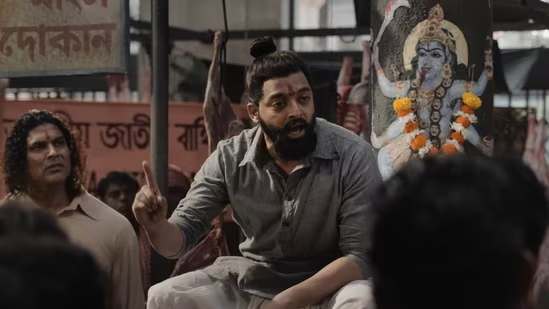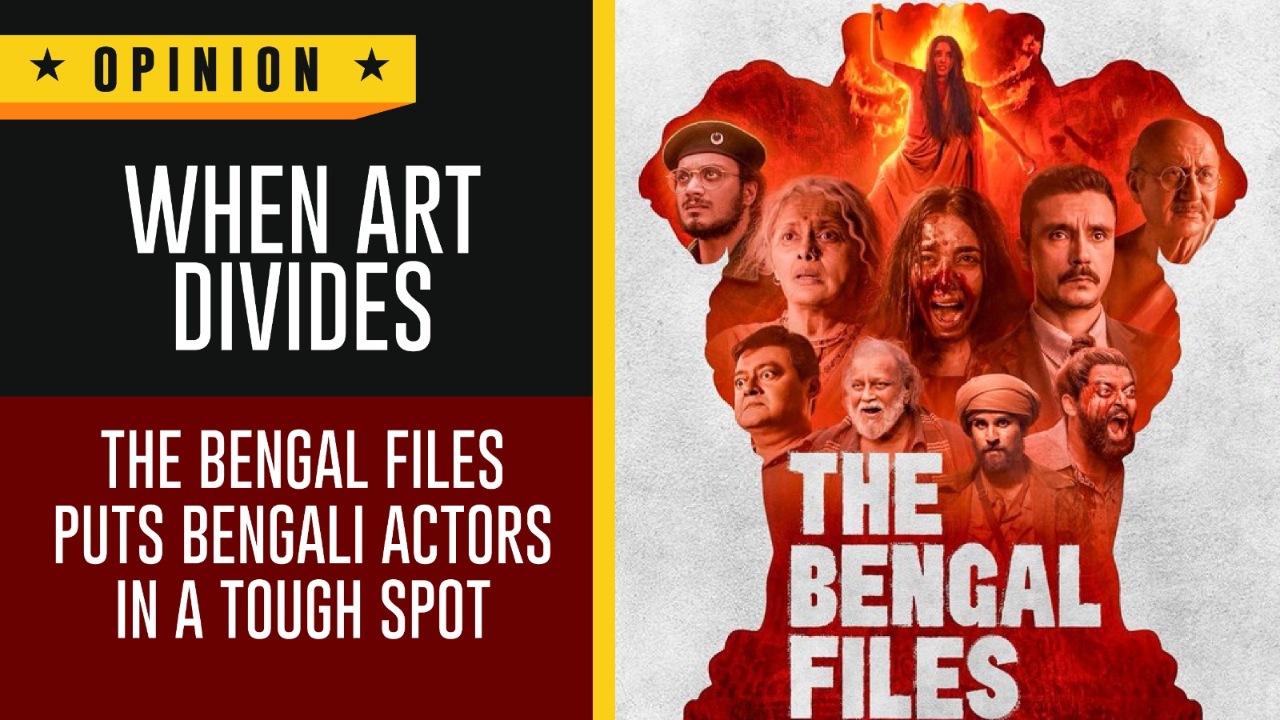Sometimes, it’s not just cinema—it’s a fault line. I came across a phrase today: “Art also means resistance.” And yet, resistance takes many forms—including stepping away. That’s what we’re now seeing from Bengali actors Saswata Chatterjee and Saurav Das, who appeared in the trailer for The Bengal Files but are now subtly, or even explicitly, distancing themselves from the film.
The restraint shows and looks topsy turvy, with the brouhaha that began ever since the trailer dropped—with not getting allowed for the launch in West Bengal. Kolkata Police reported that the event did not have the permission to screen the trailer. Hours passed, and the trailer got screened, with the Bengali actors getting grilled by the netizens of Bengal.

Amidst the turmoil, Gopal Patha’s (Gopal Mukherjee) grandson filed an FIR and sent a legal notice to Vivek Agnihotri for misrepresenting the Bengal fighter in the film. He played an important role in preventing the Muslim League riots back in 1946. In the film Saurav Das plays the role.
With all of this boiling, Saswata Chatterjee and Saurav Das distanced themselves from the film. For in the end, it’s always the artists who become the easy targets. With all of this boiling, Saswata Chatterjee and Saurav Das distanced themselves from the film. For in the end, it’s always the artists who become the easy targets.
Saswata, usually soft-spoken and careful with his words, chose to clear the air in a podcast. He stated what many in the industry quietly accept: when he signed on, it was The Delhi Files. The name The Bengal Files came later, after the shoot. That shift, as he pointed out, was not his call. And yet, here he is, being pulled into a narrative he never consciously endorsed.
He didn’t know the full story, because that’s how work happens now. The actor is told his character, his lines, his context, and little else. “You only get to know your track,” Saswata said, almost resigned. And when he did learn about the character, it wasn’t politics that drew him in. It was the role itself, layered, villainous, challenging. That’s the language actors speak. Not headlines, not hashtags.
Saurav Das mirrored this sentiment. “I only knew about my character,” he said, reiterating the fractured process behind most big-budget films today. His portrayal of Gopal Patha was not about rewriting history, he insists, but playing a strong, standalone figure. And just like Saswata, he refuses to conflate a role with a belief. “If I play Hitler someday, that doesn’t make me a Nazi supporter,” he said, blunt but honest.
But honesty rarely finds favour in outrage culture. The problem is, once the script leaves the page and enters public discourse, control slips out of the actor’s hands. What begins as a character study becomes a political pawn. And no matter how far they step back, it’s the artists who end up answering for the fallout.
There’s a growing fatigue in this cycle: art, outrage, disownment. And each time, it’s not the producers or directors who are dragged to the firing line first. It’s the faces. The voices. The performers. The ones who entered the frame with nothing but their craft, and now find themselves caught in a storm of misinterpretations and misrepresentations.
In that sense, the real question is not whether these actors support the film’s message. The real question is: are we willing to let artists create without suspicion, or must they forever prove their innocence every time a story touches a nerve?
Because if we continue like this, the price of performing will no longer be criticism. It will be condemnation.

